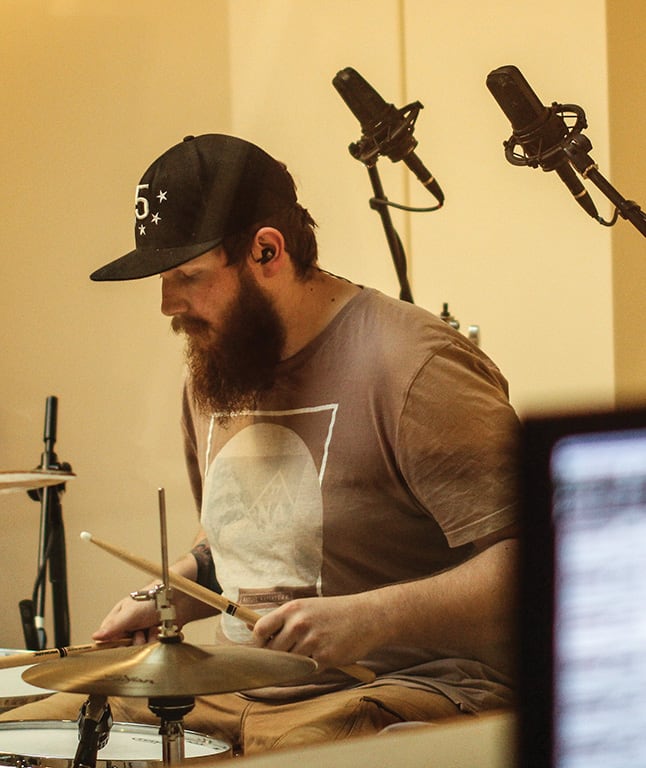
Studio Focus: Puzzle Factory
A river cuts through rock, as they say, because of its persistence. And Flood is persistent. “Flood looked me in the eyes and said, ‘You should move to London.’” recalled Australian producer Dax Liniere, who at the time was tossing around the idea of moving overseas when he mentioned it to the famous UK producer. “I was saying how expensive it was. He looked me in the eyes again, pointed at me and said, ‘You should move to London.’ A few months later, it clicked. It was like a cheesy movie, I could hear his voice and see him pointing.”
Up until a few years ago, Dax Liniere was comfortably living the self-employed studio owner life in Canberra. That all changed when Dax managed to snag a Churchill Fellowship which sent the producer around the world on a fact-finding mission. The idea was to embed himself in various professional environments to glean insights he could bring back to his homeland. It hasn’t quite worked out according to plan. While Dax did learn a whole lot from his time with Alan Moulder and Flood at their Assault & Battery studio in the UK, a few years later we lost Dax to the UK.
After the initial Fellowship trip, he went back on another fact-finding mission in November 2015. This time to see whether there’d be enough work for him to make a move to Europe. At the time he’d set his sights on the much more affordable city of Berlin when Flood derailed those plans.

A few months later, Dax had packed everything he owned into a shipping container and sent it to the other side of the planet.
“It took a gruelling seven months to find the right place,” said Dax. “In the initial visit I checked out three or four properties with some different commercial agents. They said the market usually gets flooded just after Easter, because they take the break to pack up their offices and move out. Apparently it wasn’t going to be any trouble finding a £15/square foot lease. I arrived just after Easter and, lo and behold, there was nothing. That was the first of many disappointing road blocks.”
18 months later, he’s finally finished building Puzzle Factory in Tottenham, just five miles from the centre of London. “I lucked out,” said Dax, who eventually found a spot at the intersection of three different train networks in the largest (180sqm) unit of three in a big warehouse.
There are five studio rooms in Puzzle Factory, all spaced out in a row. Control Room 1 is Dax’s personal mixing and mastering suite. Next in line is Control Room 2, adjoining the main 5.5 x 4.7m live room, which connects to a smaller 3 x 2.7m live room, that backs onto Control Room 3. There’s also a machine room, kitchen/lounge, and a 6.5m by 3.5m workshop, to give Dax space to build his own gear. Jeff Hedback designed the structure and acoustics of the studio, while Dax undertook the job of building it to his spec and fitting out the internal acoustic treatment.



Control Room 1 is Dax’s own space. Dax is a die-hard in-the-box mixer, so his setup looks more like a mastering suite than a big studio mix room with no console and Duntech Princess monitors reaching to the ceiling. The focus was on designing great rooms, then creating an impeccable signal path all the way from the source to the monitors. The outboard is mostly preamps, and the only thing on his desk besides a keyboard and ball mouse is a single fader Alphatrack for balancing the mix.
“The room was designed specifically for those speakers and you can tell,” said Dax. “The monitors are flat down to 38Hz and you can hear everything. We were nearing completion of Control Room 1 and it was time to do some measurements. Jeff designed it to the millimetre, and I built it to the millimetre. I ended up getting the Sonarworks calibration mic, set it up how Jeff asked, captured the measurements and sent them off. He came back and said, ‘I’m not totally sure what I’m seeing here. It’s possible there’s something wrong with the mic.’ So I repeated the process with another setup; calibration, capturing responses. He came back and said, ‘well the results are basically identical and incredible. You have no low frequency resonances, your left to right matching across the spectrum is amazing, and the low frequency matching from left to right is within 3.5dB.’ I was pretty excited to get that email.”















RESPONSES